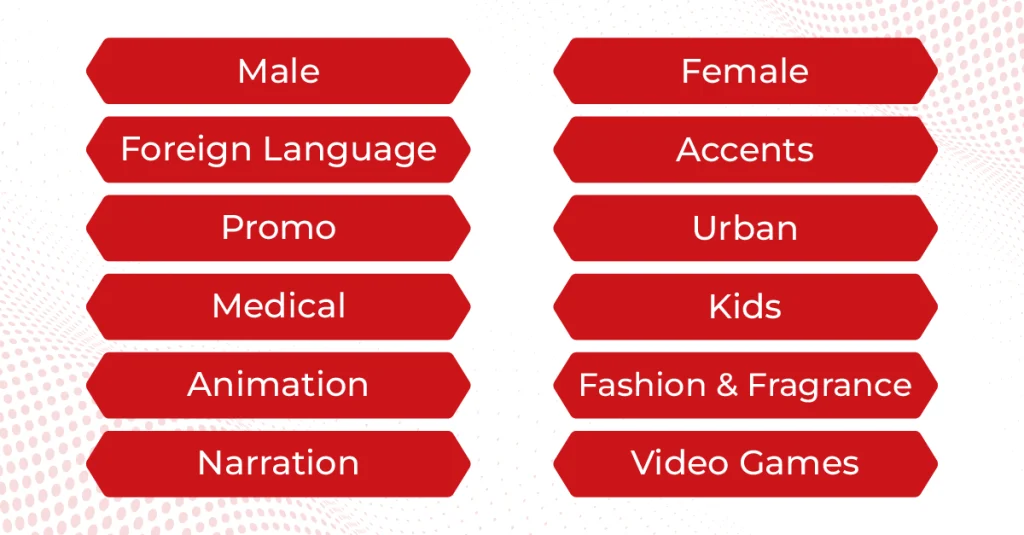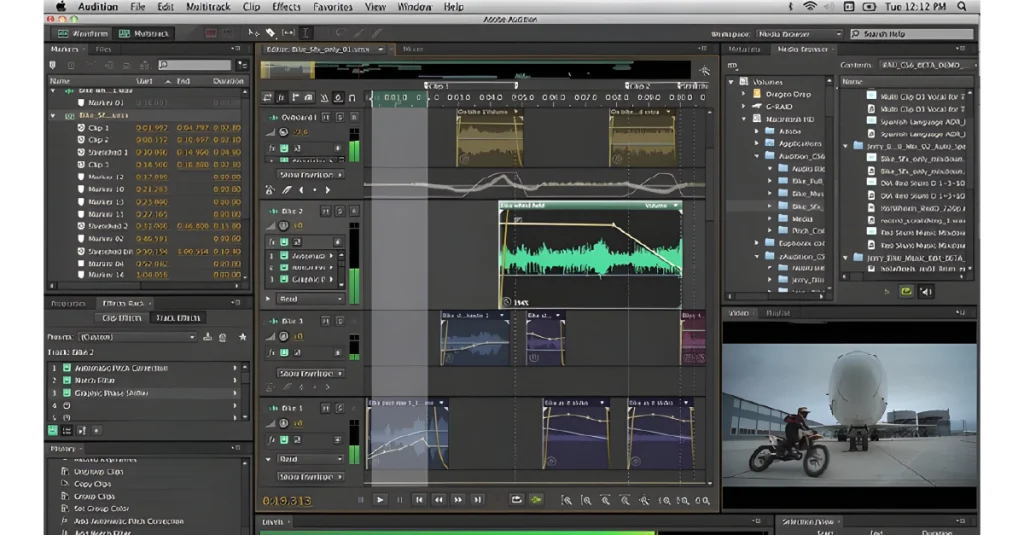Today, content is more than text on a screen; it’s video, audio, animation, and story. Multimedia has become the most powerful way to educate, inspire, and connect. But the challenge is how to make that content resonate with audiences around the world.
Whether it’s an onboarding video, a product demo, or an eLearning course, the voice that tells your story can make all the difference. It’s not just about being understood; it’s about being heard in a way that feels familiar, authentic, and local.
In this guide, we’ll explore how voice-over localization helps multimedia content reach further, sound better, and connect deeper, no matter where in the world your audience is.
What Is Voice Over Localization?
Voice-over localization is the process of adapting spoken audio content from one language to another while tailoring it to the cultural, linguistic, and emotional nuances of a specific target market. It replaces the original voice track with a new recording performed by voice actors who are native speakers and culturally fluent in the target language. This ensures the content feels natural, relatable, and engaging to the local audience.
Unlike basic dubbing, voice-over localization preserves the original meaning and context but adapts the tone, idioms, and delivery style to resonate with the target culture.
It often involves multiple steps:
- Translating the script
- Culturally adapting the content
- Selecting appropriate voice talent
- Recording
- Quality assurance
The goal is to create an immersive and authentic listening experience that connects deeply with the audience, whether in eLearning, gaming, corporate training, or marketing.
Voice Over Localization vs Simple Translation
Voice-Over Localization vs. Simple Translation: What’s the Difference?
| Aspect | Simple Translation | Voice-Over Localization |
| Definition | Converts spoken or written content from one language to another | Adapts spoken content into another language and culture, with localized voice performance |
| Tone & Emotion | Often literal, can miss tone, humor, or emotion | Captures tone, mood, and emotion to sound natural and culturally appropriate |
| Voice Talent | Generic or automated voices | Carefully selected voices that match the audience’s expectations (age, gender, accent) |
| Cultural Relevance | May ignore local customs, expressions, or sensitivities | Localizes references, idioms, and cultural context for a deeper connection |
| Audience Impact | May feel robotic or foreign | Feels familiar and relatable—like it was made just for them |
| Use Case Suitability | Basic understanding | High-impact multimedia: eLearning, ads, training videos, entertainment |
| Retention & Engagement | Lower engagement, especially for multimedia | Higher engagement and recall due to natural, localized delivery |
Types of Voice-Over Services
Voice-over localization isn’t one-size-fits-all. Depending on your content and goals, you might use different techniques, such as:
- Voice Dubbing Services
This is when the original voice track is replaced entirely with a localized version, matched to the tone and timing of the original. It’s often used in films, series, and games where character consistency matters.
- Multilingual Voice-Overs
Perfect for global campaigns, e-learning, or corporate videos where the same content needs to be voiced in multiple languages. It ensures consistent delivery while tailoring each version to local audiences.
- Non-synced & Phrase-Sync Dubbing
These techniques vary in how closely the new voice matches the original speaker’s mouth movements. Non-synced is more flexible, while phrase-sync aims for a smoother visual match—useful for product demos or training videos where timing still matters.
How Voice-Over Localization Works
So, how does voice-over localization actually happen? It’s not just about hitting “record” in another language—it’s a thoughtful, multi-step process that brings together linguists, creatives, and technical pros to make your content sound natural, polished, and perfectly tailored for each audience.
Preparing for Voice Over Localization
Every great voice-over starts with solid prep. Before anything is recorded, teams gather all the key materials—scripts, video files, pronunciation guides, and any brand or product references that need to stay consistent.
But here’s the thing: a script that works well in English might need a little breathing room when adapted to another language. Idioms, cultural references, and acronyms don’t always translate smoothly. That’s why flexibility is key—sometimes it takes a few creative tweaks to keep the meaning while making it sound natural and relatable in a different culture.
Selecting Native-Speaker Voice Talents
The voice behind your message matters—a lot. Native-speaker voice talents aren’t just fluent; they understand the rhythm, emotion, and subtle cues that bring the content to life for their audience.
Choosing the right voice involves more than just language. It’s about matching tone, energy, gender, and even regional dialects to your brand and audience. A corporate training video for a Latin American market might need a calm, authoritative female voice with a neutral Spanish accent, while a fast-paced gaming promo in Japan might call for something totally different.
Recording and Post-Production
Once the voice talent is chosen, it’s time to hit the booth—or, in many cases today, remote recording studios with broadcast-quality sound setups. Whether in-house or virtual, recordings are handled by professionals who know how to deliver clear, consistent, and engaging multilingual voiceovers.
Behind the scenes, audio engineers are working their magic—cleaning up takes, adjusting timing, syncing with visuals, and adding any necessary effects. The goal? A seamless final product that feels effortless to the viewer or listener.
Quality Assurance
Before anything goes live, it goes through a final check. And this part is crucial.
Quality assurance means reviewing the localized voice-over for clarity, accuracy, cultural appropriateness, and perfect sync with visuals. Any awkward phrasing or misaligned timing gets flagged and fixed. It’s the final polish that makes sure your global audience hears your message exactly the way you intended.
Benefits of Voice-Over Localization
Whether you’re launching a product, rolling out training modules, or immersing players in a new game world, the right voice can make all the difference.
Enhance Marketing Campaigns
Let’s be honest—marketing without emotion doesn’t work. Voice-over localization gives your content that emotional edge by delivering it in a voice that sounds familiar, trustworthy, and culturally in tune.
According to CSA Research, 65% of consumers prefer content in their own language, even if they’re fluent in English, and 40% won’t buy if the information isn’t presented in a language they understand. That’s a big deal.
Improve Engagement for eLearning and Gaming
In both e-learning and gaming, engagement is everything. And nothing pulls people in quite like a voice that gets them.
For e-learning, learners absorb information better when it’s delivered in a tone and accent that feels familiar. In fact, research shows that learners retain up to 25% more information when it’s delivered in their native language.
In gaming, voice-over localization is often the difference between a global hit and a cultural flop. Players expect characters to sound natural and immersive in their own language. That’s why studios invest in high-quality, in-character voiceovers—not just for translation accuracy, but to create a truly immersive experience that holds attention and builds fandom.
Expand Global Reach
Whether you’re pitching to investors in Dubai or training teams in São Paulo, localized voiceovers help your content travel farther—and land better.
From internal training videos to external-facing product launches, a localized voice makes your message accessible and relatable in new regions.
And here’s the kicker: companies that invest in localization are 1.5x more likely to report increased revenue from international markets, according to a Common Sense Advisory report.
Voice-Over Adaptation Techniques
Great voice-over localization is as much an art as it is a science. Here’s a quick look at the key techniques that make it all work.
Cultural Adaptation in Voice-Overs
Every culture has its own rhythm, expressions, and emotional cues—and what sounds inspiring in one country might sound awkward or even off-putting in another. That’s why voice-over scripts often get adjusted for local idioms, tone, humor, and references.
Accent Considerations In Voice-overs
Accent matters more than most people think. A voice with the wrong regional accent can feel out of place, even if it’s technically correct.
That’s why successful localization involves picking native-speaker voice talents who reflect local preferences—whether it’s a neutral Spanish accent for Latin America or a softer French Canadian tone for Quebec.
Voice-over Casting Process
Synchronization Techniques
Matching the voice to the visuals is key to a smooth, professional result. There are a few ways to go about it:
- Lip-sync dubbing aims to match the speaker’s mouth movements, often used in films or character-driven content.
- Phrase-sync keeps timing and pacing aligned with the visuals but isn’t as strict on lip movement—great for explainers or tutorials.
- Non-synced is more flexible, often used for narration or voiceovers where the speaker isn’t visible.
Each method has its place, and the choice depends on the content type, budget, and how natural the final product needs to feel.
| Quest Accepted: Bringing Your Game to Asian Audiences. Learn More About Our Game Localization Services. |
Tools and Technology in Voice-Over Localization
Today’s localization workflows are faster, more flexible, and more cost-effective than ever, thanks to powerful tools that make the magic happen behind the scenes. Here’s how technology is changing the game.
Voice-Over Recording Tools
It all starts with capturing crystal-clear sound. Professional-grade microphones, acoustically treated recording spaces, and industry-standard editing software like Pro Tools or Adobe Audition are the backbone of quality voice production.
But language-specific voice recording doesn’t stop there—real-time monitoring, noise reduction filters, and vocal tuning tools help voice artists and engineers deliver clean, polished audio that sounds studio-perfect… even when it’s recorded remotely.
AI in Voice Localization
AI is making a serious impact in the localization world. From automated voice matching to pronunciation guidance and consistency checks, AI-powered tools help streamline repetitive tasks and catch small errors before they become big problems.
While human talent still leads when it comes to emotional delivery and cultural nuance, AI speeds up everything around it—saving time without sacrificing quality. Think of it as the behind-the-scenes assistant that helps everything run smoother.
Remote Voice Recording Technology
These days, you don’t need everyone in the same room—or even the same country—to produce amazing voiceovers. Remote recording tools like Source-Connect, SessionLinkPRO, and cloud-based review platforms allow voice artists, directors, and clients to collaborate in real-time from anywhere in the world.
This flexibility not only cuts down on travel and studio costs but also speeds up production timelines dramatically. That means faster turnarounds, smoother workflows, and more freedom to work with the best voices—no matter where they are.
| Bring Your Content to Life Across Asia. Learn More About Our Localization Services. |
From marketing campaigns to e-learning modules and immersive game experiences, a well-localized voice-over can be the difference between being simply understood… and truly felt.
But to do it right, you need more than just tools—you need cultural insight, native-speaking talent, and a partner who knows the terrain.
That’s where AsiaLocalize comes in.
With over 12 years of experience specializing in Asian languages and markets, we’ve helped global brands adapt their content with precision, heart, and cultural fluency. Whether you need voice dubbing in Japanese, training videos in Thai, or marketing content in Korean or Vietnamese, we’re here to make sure your voice is heard—clearly, authentically, and impactfully.
| Ready to Sound Local Everywhere? We’ve Got You. Learn More About Our Multimedia Localization Services. |








